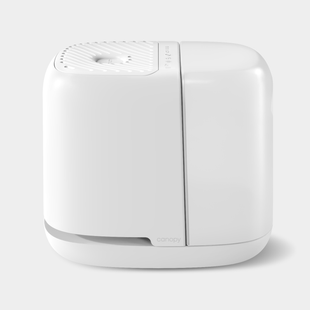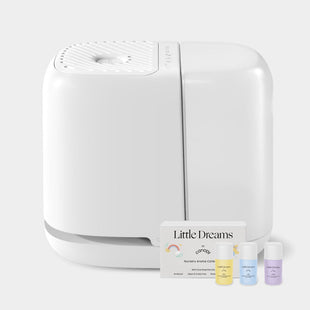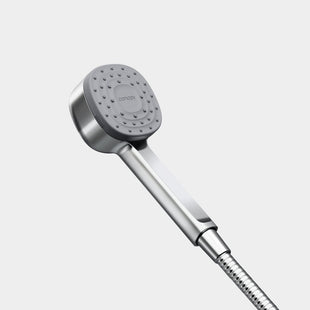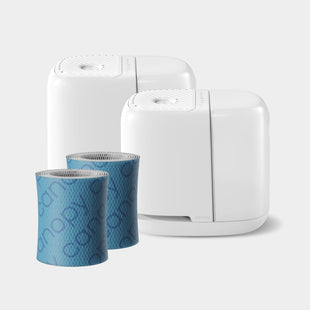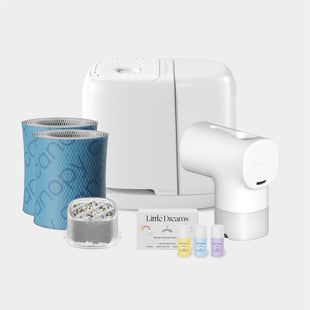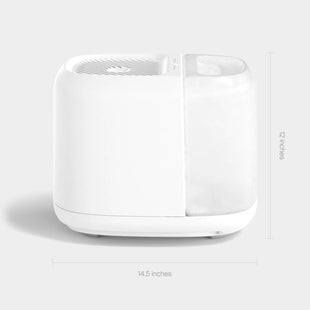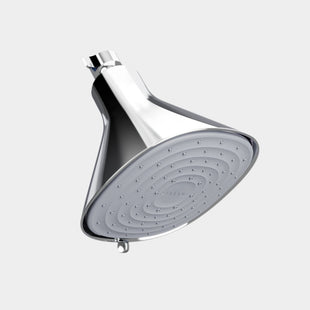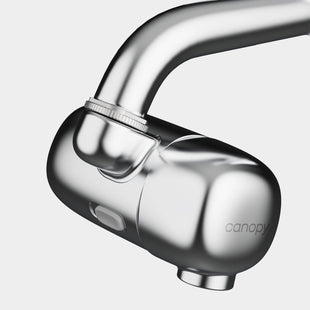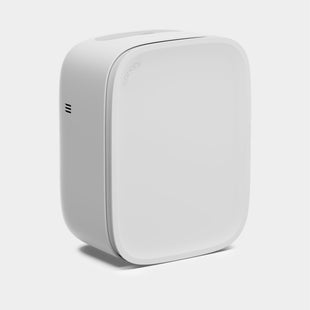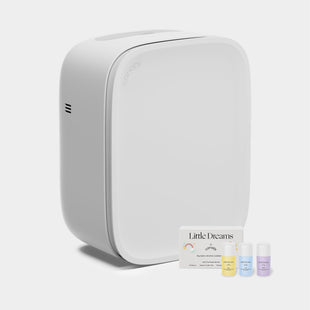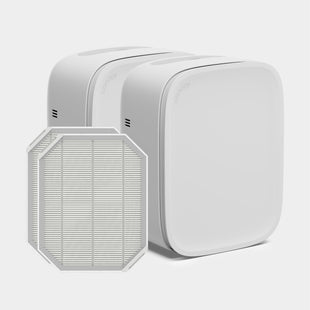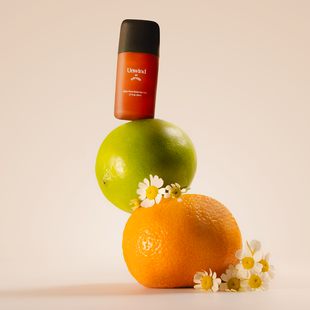You’re probably already familiar with outdoor air quality and the factors that affect it, from pollen to pollution. But what is indoor air quality, and why does it matter?
Indoor air is that which dwells inside homes, buildings, and other structures. Like outdoor air, its quality is influenced by many variables. Let’s take a closer look at these factors and what you can do to achieve optimal indoor air quality for better wellness.
Why Does Indoor Air Quality Matter?
The air you breathe inside can directly affect your health, potentially contributing to issues like allergies and asthma, among others. Unfortunately, indoor air can be much more polluted than outdoor air. And because we spend up to 90% of our time indoors, it’s more important than ever to prioritize indoor air quality1.
What Can Affect Indoor Air Quality in Homes?
Several pollutants can interfere with air quality in buildings2. These categories represent some of the most common causes of poor indoor air quality.
Biological Pollutants
These natural irritants include pet dander, insect parts and pollen.
Carbon Monoxide
Carbon monoxide is an invisible, odorless gas that can go unnoticed without proper detection. The gas is extremely toxic and potentially lethal in high concentrations. In some states, private dwellings are required to have carbon monoxide detectors, but all homes should have them regardless of local laws3.
Common sources of carbon monoxide indoors include:
- Gas or space heaters without proper ventilation
- Backdraft from appliances
- Gas stoves
- Car exhaust from attached garages
- Tobacco smoke
Formaldehyde
Similar to carbon monoxide, formaldehyde is a toxic, colorless gas. Fortunately, formaldehyde has a strong, identifiable odor. Within homes, the gas may be found in:
- The resins found in certain wood products
- Certain building materials
- Insulation
- Glue
- Paint, coating, lacquers, finishes
- Certain paper products
- Certain beauty and consumer products (as a preservative)
- Many fertilizers
Indoor Particulate Matter (PM)
Indoor particulate matter refers to solid or liquid particles that remain suspended in the air. In general, larger PM is considered troublesome because it can be inhaled through the nose or mouth, potentially damaging internal organs.
The most common sources of indoor particulate matter are:
- Stoves
- Heaters
- The fireplace or chimney
- Tobacco smoke
Pesticides
A pesticide is a chemical used to kill insects, vermin, bacteria, fungi, and other “pests.” Fumes from these chemicals can contaminate the air both outside and indoors.
Secondhand Smoke
Secondhand smoke is the combination of smoke emitted from cigarettes, cigars, or pipes in tandem with the smoke exhaled by the smoker. Secondhand smoke contains over 7,000 substances that interfere with air quality4.
Volatile Organic Compounds
Volatile organic compounds (VOCs) are gases that escape from various solid or liquid products. Common sources include:
- Paint products
- Wood preservatives
- Aerosol sprays
- Disinfectants
- Air fresheners
- Car products (fuel, oil, etc.)
- Dry-cleaned clothing
Outdoor Factors
In addition to the above factors, outdoor air quality can also impact the air inside your home — even if you keep your windows closed. Small cracks around windows and doors allow air to seep in, and outside air will enter each time you open your door. Some pollutants, like pollen and smoke, can even cling to your clothing. From wildfire smoke to emissions from factories and vehicles, regional pollution can negatively affect your indoor air5.
How Does Indoor Air Quality Affect You?

Indoor air pollution can take a toll on your health, both in the short and long term.
Short-Term Indoor Air Quality Issues
Even a brief exposure to indoor air pollution can affect you physically, potentially leading to irritation of the eyes, nose, and mouth5.
The best way to determine whether your symptoms are related to indoor air quality is to observe whether they dissipate upon leaving your home. If your symptoms diminish or disappear immediately, you may have an indoor air pollution problem.
Long-Term Indoor Air Quality Issues
Left unaddressed, long-term exposure to indoor air pollution can lead to health concerns, especially for vulnerable individuals. This can include children, the elderly, and those with existing health challenges6, so it’s important to discuss individual concerns with your doctor.
The good news is that indoor air quality testing is available, and there are steps you can take to address indoor pollution.
Does Indoor Humidification Influence Air Quality?
When humidity levels are too high indoors, excess moisture creates a breeding ground for mold and mildew. Mold can release microbial volatile compounds into your home air1.
On the other hand, when humidity levels are too low, dust mites and other irritants can thrive. These particles can settle onto surfaces and accumulate as dust in the corners of your room, wafting into your home air when you turn on the air conditioner or heater.
What Can You Do to Promote Better Indoor Air Quality?
Deep Clean Your Home
Routine deep cleanings can address biological pollutants, microbial volatile compounds, secondhand smoke, and wood smoke. Just check the ingredients in your cleaning products, as many include toxic chemicals.
Let Fresh Air In
Without proper ventilation, indoor air pollution can build up, suffocating the quality home air6. Opening the windows in your home once per day is a great way to replace the pent-up pollutants with a fresh dose of quality oxygen.
Monitor Your Home’s Humidity Levels
Monitoring humidity levels in your home can make a world of difference for your indoor air quality. To reduce humidity levels in your home, follow our recommended dehumidifying tips or introduce a dehumidifier if needed. If humidity levels are too low, a humidifier is the best way to elevate moisture levels to a sufficient level for optimal health and wellness.
Invest in an Air Purifier
If you’re still concerned about your indoor air quality, an air purifier is worth considering. These devices work as air filtration systems, sucking home air into the device, trapping pollutants, and dispersing fresh air back into your home. There are many types available, including portable devices that can move from room to room as necessary.
Perform Routine Indoor Air Quality Testing
Air quality testing identifies and measures contaminants in indoor air, helping you determine unhealthy levels of any contaminants in your home. There are several approaches available:
- In an air sample test, indoor air is measured against outdoor air to determine the differences in pollution.
- Surface samples require the use of a swab, tape, or a petri-type dish to collect a specific sample from the questionable surface.
- Bulk samples collect a large volume of material to test for a particular contaminant.
- An air quality monitor is a device that collects air quality data measured against baseline levels to constantly monitor changes in contaminant levels.
Fortunately, you don’t have to test for every potential indoor air contaminant to analyze your home air quality. The best strategy to implement when selecting an air quality test for your home is deductive reasoning. For example, if you experience discomfort or irritating symptoms in your home, you may want to test the levels of biological pollutants. Or, if you have an older home and suspect that certain rooms lack adequate ventilation, you can test for indoor particulate matter.
You can purchase home air quality tests and air quality monitors online or at your local home improvement store or hire an air quality testing company for a professional assessment.
Feeling Refreshed Starts at Home
When you think of all the things that make home feel like home, stale air isn’t one of them. If dust, pollen, pet dander, and odors are making your space feel less fresh and inviting, Canopy is here to help. Our Bedside Air Purifier uses three layers of HEPA filtration to trap particles that can trigger allergy symptoms and leave rooms feeling stuffy and uncomfortable. We combine the comfort and freshness you want from an air purifier with the ease of use and signature aromas you expect from Canopy.
Sources:
- (11 October 2022). Why Healthy Indoor Air Quality is Important. Asthma and Allergy Foundation of America. Retrieved September 25, 2025, from https://community.aafa.org/blog/why-healthy-indoor-air-quality-is-important
- (24 July 2025). Indoor Pollutants and Sources. United States Environmental Protection Agency. Retrieved September 25, 2025, from https://www.epa.gov/indoor-air-quality-iaq/indoor-pollutants-and-sources
- (7 July 2025). Carbon Monoxide Detector Installation Statutes. National Conference of State Legislatures. Retrieved September 25, 2025, from https://www.ncsl.org/research/environment-and-natural-resources/carbon-monoxide-detectors-state-statutes.aspx
- (19 November 2024). Health Risks of Secondhand Smoke. American Cancer Society. Retrieved September 25, 2025, from https://www.cancer.org/cancer/risk-prevention/tobacco/secondhand-smoke.html
- James, J., MD. (October 2024). Indoor Air Quality. Asthma and Allergy Foundation of America. Retrieved September 25, 2025, from https://aafa.org/asthma/asthma-triggers-causes/air-pollution-smog-asthma/indoor-air-quality/
- Prescott, N., et al. (11 October 2023). The Need for US Indoor Air Quality Guidelines. Rocky Mountain Institute. Retrieved September 25, 2025, from https://rmi.org/the-need-for-us-indoor-air-quality-guidelines/


